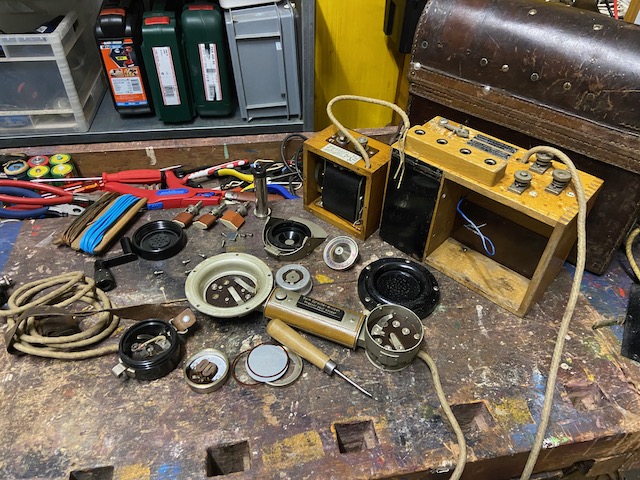
Find more details on Swiss field telephone history on the Swiss Army Field Telephones Timeline.
The Swiss Army field phone Feldtelefon (known today as Model 1909, then just called the "Feldtelefon") was introduced in 1909. It was designed and built by Siemens & Halske, Berlin. This was the first Swiss field instrument acquired in significant quantity. Before the Swiss army only had a total of about 100 instruments made by the Swiss companies Hasler and Favarger. Until 1930 about 1800 pieces of the Feldtelefon were acquired (including updated Versions introduced in 1924 and 1925).
In the 1920ies some of the instruments were refurbished with better buzzers ("Englischer Summer") and external magnetos were added. In 1935 all instruments were again refurbished with new types of rx and tx elements and new pluggable headsets. The capacitors were replaced and new inert gas lightning arrestors were added. On some of the instruments the plug rail was removed.
The instrument is still mentioned in the regulations of 1940. During WWII the instruments were retired and then liquidated in 1956.
Description from "Vorschriften für den Telefon- und optischen Signaldienst der Artillerie, 1941" (Translated and slightly abridged):
The field telephone is built into a leather satchel which can be carried as backpack. Its main components are:
The handset which is stored inside the lid. With exchangeable rx and tx elements. Built into the handle the buzzer and push to talk switch. The handset cord is connected fix.
The headphone which uses the same rx element than the handset. It is removable and stored inside the satchel together with a whistle, a screwdriver, three line plugs, and a board with a length of earth and insulated wire. The headphone can be used as a line check instrument. The headphone plug has additional screw type mounting posts to connect lines directly. The headphones is then used for rx and tx. For signalling the whistle is used.
The battery, consisting of two elements, is placed in the insert frame. The elements have to be activated according to the usage instructions printed on the element label.
The induction coil consists of a laminated iron core with a primary and secondary winding. By pressing the talk button the primary winding is connected to the tx elements. The secondary winding is connected to the headphone and handset rx elements and then line terminals.
The buzzer is used to call the other station. When pressed, the buzzer button closes the battery circuit via the buzzer and thereby causes the Calling of the opposite station. The buzzer button also opens a switch to prevent buzzing in the own headphone.
The capacitor. One of the capacitors is used in the spark suppression circuit for the buzzer. The second capacitor blocks the dc current when the instrument is connected to a central battery network.
The inert gas lightning arrestor. To shorten excess voltage to earth.
The choke coil blocks the path of the alternating current. It is used to call the civil telephone switchboard in accordance with the information on the switch. With the position «automatic call and speak" central office battery is closed over the choke coil closed.
Plug rail with three plug positions (all in parallel connected to the instrument's La connection) and three plugs to be used as makeshift field switchboard with single wire (earth return) setups. The instrument Lb is connected to earth. Lines are connected to the plugs and in this way can be moved between different field phones. To connect two or more lines the plugs are connected to the plug rail from the same field phone.
Disassembled.

Body front.
On the left the Siemens buzzer and the buzzer adjust wrench.
On the right the battery compartment (The element minus lead has to be placed though the whole in the back to connect on the other side).
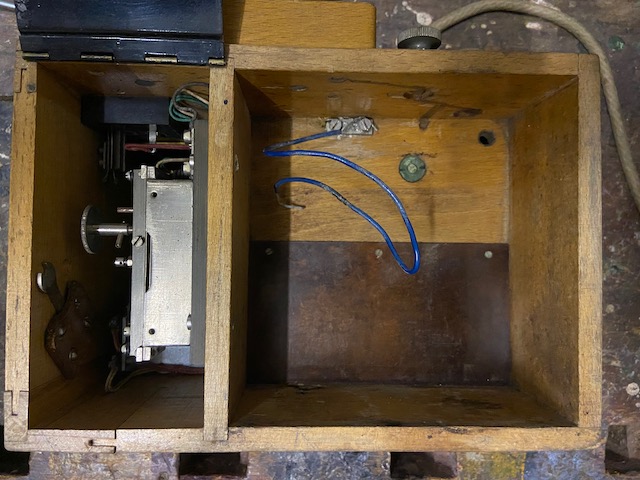
Body back.
Bottom left the choke coil, right of it the capacitors.
Above the minus connector and the handset connection.
On the right the induction coil and the lightning arrestors.
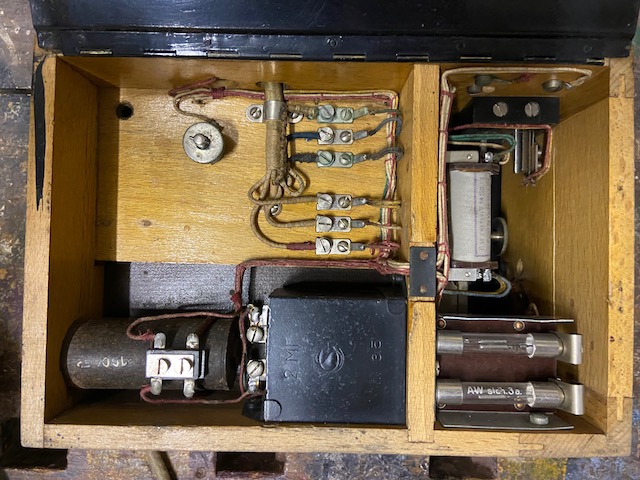
Body top.
La, Lb and E connectors, Lb is shortened to E (can be opened).
On top the plug rail which is electrically connected to La.
On the right the headset sockets.
The two position switch is for usage on civil central battery networks.
"CB & Aut. Schlusszeichen" (Clear Signal) is for normal local battery operation and on central battery and automatic networks "on hook".
"CB & Aut. Aufruf und Sprechen" (Calling and Speaking) is for operation on central battery and automatic networks "off hook" (In this position the choke coil is connected directly between La and Lb to close the CB network DC circuit).
Instrument serial number 884.
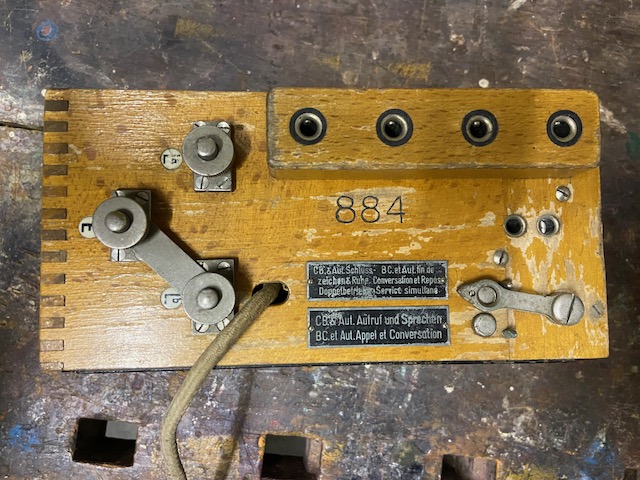
The open handset.
In 1935 the handsets were reworked to use Swiss type 1931 rx elements and Siemens & Halske type 1928 tx elements.
(The Zerlegbares Telephon, 1915 in the collection still has the original type handset for comparison.)
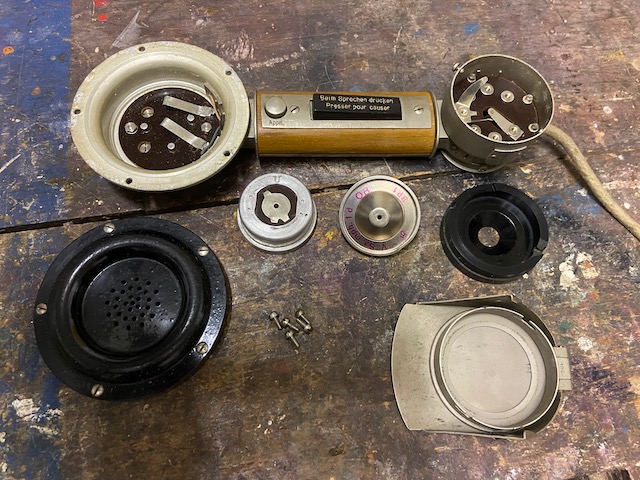
The open headset.
This headset type was also added when refurbishing in 1935.
Some of the rx elements can be opened like this one.
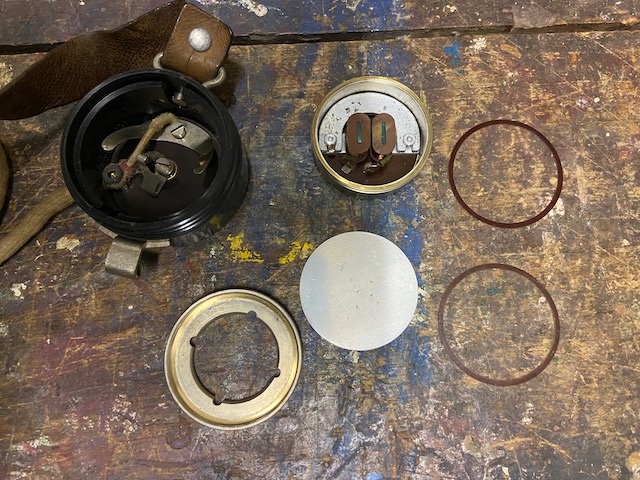
Originally the instrument did not have a magneto.
The magnetos were later added into the side compartment which originally was used to store the original bigger headset.
The magneto is installed in a small wooden box with metal lids.
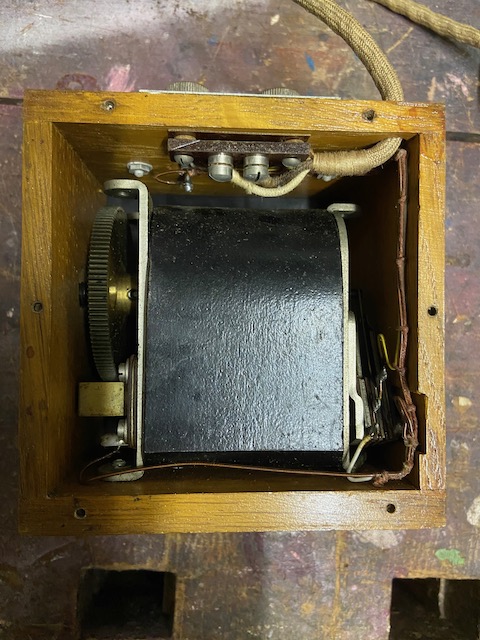
Top of the magneto box.
When used the magneto cable was connected to the instrument La and Lb and the line was connected to the magneto.
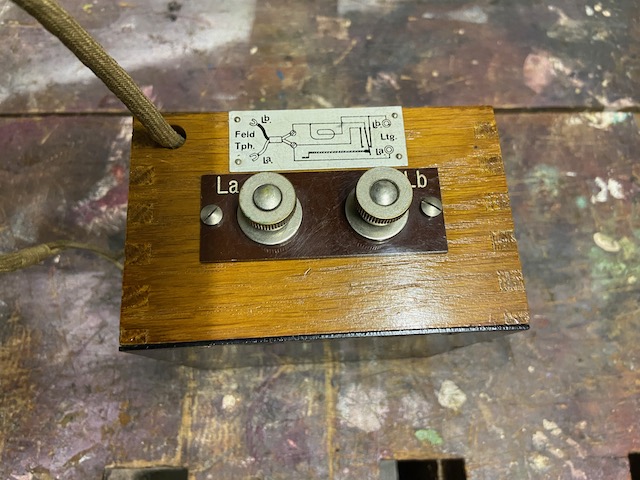
All components.
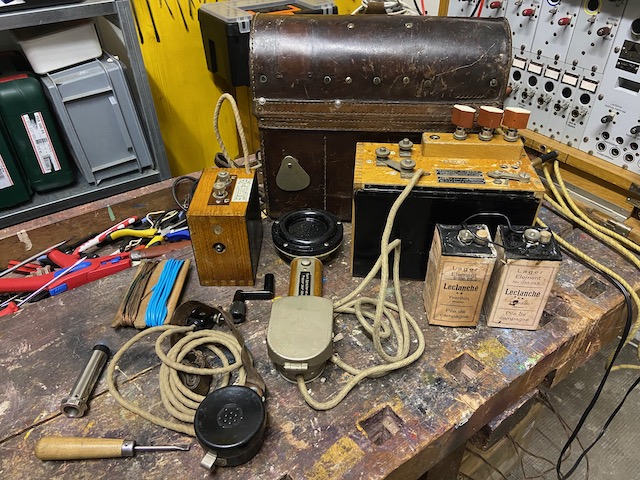
Ready to use..
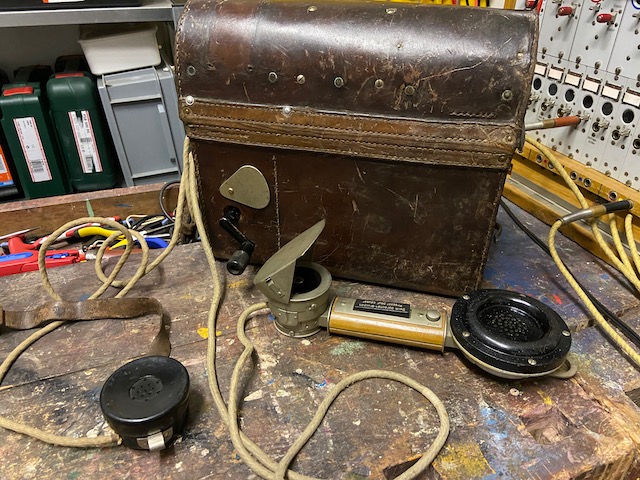
The magneto stored in the side compartment.
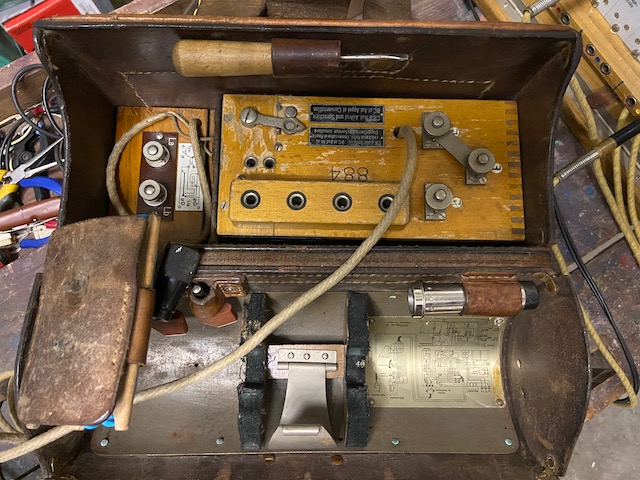
All stored.
The handset is stored in the top lid.
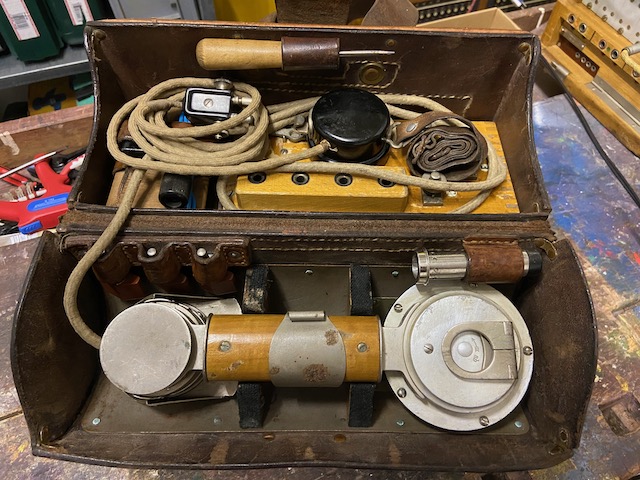
Ready for transport.
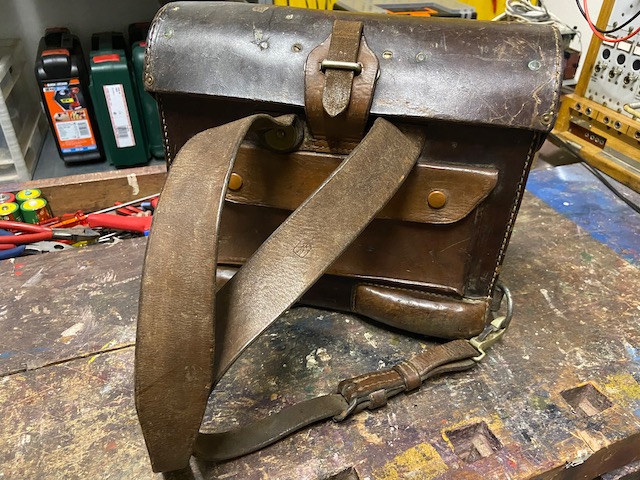
The serial on the leather satchel.

The wiring and electrical diagram inside the satchel top lid.
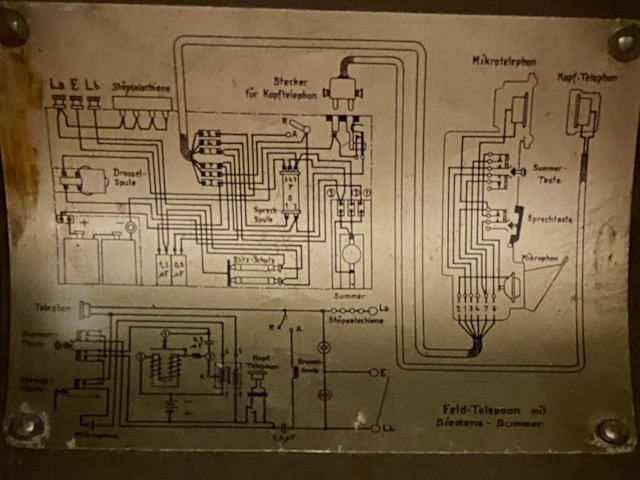
Creative Commons Attribution-ShareAlike 4.0 International License